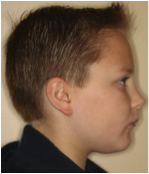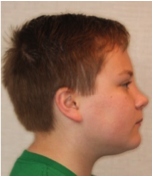Designing Your Perfect Smile: The Art of Orthodontics
Any orthodontist worth his or her salt understands the mechanics of moving teeth to improve their alignment. But how can you be sure that the smile you end up with will be the most attractive you can achieve—in your eyes? As the saying goes, beauty is in the eye of the beholder. What if your orthodontist is focused more on functionality than appearance, or doesn’t view beauty in quite the same way as you do? At Orthodontic Arts, we involve our patients in the treatment process. They’re your teeth, after all. You’re the one who’ll be beholding them the rest of your life. There are so many choices, nuances, and subtleties that can affect the outcome of an orthodontic treatment. And those factors can mean the difference between teeth that are straight and a smile that truly wows. That’s the art of orthodontics, and since you’re the commissioner of the work, the canvas, and the most important art critic of the finished creation, we feel you should have a say in designing your perfect smile.
Our very name, Orthodontic Arts, reflects the blending of both mechanics and design. Dr. Prillaman credits his parents for helping him appreciate the balance of the two in his profession. His father was an engineer; his mother, an artist and teacher. As a product of their union, Dr. Prillaman incorporates an engineer’s understanding of forces that produce motion in aligning teeth, while maintaining an artist’s eye toward proportion and shape, which affect the aesthetics of a person’s smile. He then educates our patients as to the options available so that they can participate in their care and make the choices that are right for them. Likewise, Dr. Sterne shares this same creative and collaborative philosophy. He believes in assisting and empowering our patients to make their own decisions based on sound information. He’s happy to share what he would do with his own child, but he won’t impose his choice or simply do what seems best or easiest to him. Your input is valued and welcome.
So, what are some of the choices—the artist’s tools—we can use together in sculpting your ideal smile?

Profile before using a bite corrector.

Profile after using a bite corrector.
• Extraction versus nonextraction or expansion treatment or bite correction. Orthodontic Arts is a face-first practice, meaning that we take into consideration not just how we’re changing the position of your teeth, but how those changes affect your profile and overall appearance. Extracting teeth to correct crowding may reduce lip support, while treating without extractions or actively expanding the dental arches may preserve lip support or increase fullness. To correct protrusion in conjunction with a retruded chin, a bite corrector can be used to position the lower jaw forward to produce a more balanced profile. We’ll help you know what you can expect with your particular profile, depending on your choice.
• Compensations for tooth size discrepancy. Many people carry a gene that causes certain teeth to be narrow or peg-shaped. While orthodontics can’t change the size and shape of your teeth, we can coordinate with your dentist to leave just the right amount of space around any teeth you feel look too small, and your dentist can build them up to the appropriate size.

Less gum tissue displayed after braces.

Gum tissue displayed before braces.
• Tooth and gum height positioning. If you want to reduce how much gum tissue you display when you smile, we can intentionally place your braces in such a way as to raise the teeth up. We can also work with a periodontist to align your teeth to the appropriate height in conjunction with a gingivectomy (reshaping of the gum tissue), or work with your dentist to position your teeth at just the right height for your dentist to then restore vertical length to worn or chipped teeth by adding composite, veneers, or crowns.
• Smile width change. We offer a variety of braces to help customize your treatment. For example, we’re currently the only practice in the Lynchburg area to use Damon braces, which are more effective at widening the arches to produce a broader smile. If you see dark areas in the corners of your smile, Damon braces may be a good choice for you.
So, let’s turn that painted-on smile into a true work of art. Because at Orthodontic Arts, we’re not just moving teeth; we’re creating masterpieces…one smile at a time.
by Karen Allard


